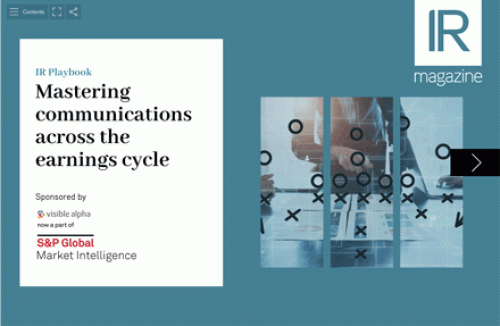Two independent consultants have produced what they say is a rebuff to critics of integrated reporting: a 40-page integrated report about ExxonMobil using information from the company’s own public filings.
Integrated reporting is intended to communicate a more holistic view of a company’s long-term strategy to investors by including material information that isn’t typically covered by traditional financial reporting, such as human capital, intellectual capital, social capital and sustainability information. It has attracted advocates amid the growing push from investors for more ESG-related corporate disclosure.
The authors of the report on ExxonMobil say their project is intended to answer critics who say integrated reporting is costly, time consuming and a legal minefield. They say their report took just 40 hours to put together and was produced completely independently of the company.
Last year a State Street survey of 582 institutional investors found that 92 percent of respondents want companies to identify and report on material ESG issues they believe affect financial performance. Robert Eccles, visiting professor of management at Oxford University’s Said Business School and co-author of the mock ExxonMobil integrated report tells IR Magazine that integrated reporting provides a framework for the disclosure of material ESG issues.
‘Integrated reporting is a form of discipline that starts with integrated thinking where companies identify the material sustainability issues that affect financial performance and that sustainability shouldn’t just stay in the sustainability department,’ he says.
Eccles says no one from ExxonMobil has commented on the report since it was published. The company did not return a request for comment for this story.
The company last year lost a vote on a proposal requesting that it report on how its business model would be affected by global efforts to limit the average rise in temperatures to below 2°C. Although the ExxonMobil board advised its shareholders to vote against the proposal, it received 62.3 percent support.
Companies in the UK are already adopting integrated reporting, with the Financial Reporting Council (FRC) issuing updated guidance on the topic last year. It is also being adopted by companies in Europe and Asia, but in the US only 21 public companies and two private companies produce integrated reports, according to the International Integrated Reporting Council (IIRC).
The mock ExxonMobil report
Eccles and his colleague, consultant Michael Krzus, set out to produce an integrated report for a US public company, using publicly available information from other disclosures and reports.
The pair selected ExxonMobil as a case study because they found the company to have robust disclosures while they were conducting a previous research report. They used the following ExxonMobil reports for their preparation:
- ExxonMobil Corporate Citizenship Report (2016)
- ExxonMobil Financial and Operating Review (2016)
- ExxonMobil Form 10-K (2016)
- ExxonMobil Summary Annual Report (2016)
- ExxonMobil Proxy Statement (2017)
- ExxonMobil Executive Compensation Overview (2017)
- ExxonMobil Energy and Carbon Summary (2018).
They structured the report using three different publicly-available frameworks – the Task Force for Climate-Related Financial Disclosure’s final report, FCLTGlobal’s ‘10 elements of a long-term strategy,’ and the IIRC’s <IR> framework. They then copied information from ExxonMobil’s publicly available reports into the outline they had created.
Other than their previous research into the oil and gas sector, neither of them has any experience of working for or with ExxonMobil. They produced the 40-page report – which includes financial highlights, a chairman’s letter and discussions of strategy, the business, risk, governance and compensation – in 40 hours.
‘Companies say it [integrated reporting] is expensive, too hard and carries litigation risk,’ Eccles says. ‘But if an old white guy like my co-author Mike Krzus can do this in 40 hours based solely on company documents sitting in a suburban Starbucks in Chicago and without having deep expertise in the oil and gas industry, how hard would it really be for a company with the resources of ExxonMobil to put together this report?’
Owning the narrative
Eccles says integrated reporting is an opportunity for issuers to own the narrative around material ESG risks. ‘The investment community isn’t going to pick through a sustainability report. It’s too long and most of the data isn’t relevant. So they buy data from a third party like MSCI or Sustainalytics. Integrated reporting is a company’s opportunity to provide their point of view and shape the narrative,’ he says.
Eccles and Krzus’ experiment could also put the need for integrated reporting into sharp focus for issuers, with the two exploring the possibility of automating the process of producing mock integrated reports using a machine-learning technology called natural language generation.
‘This tool would comb through company documents and its website as we did manually to generate an integrated report for any listed company in the world,’ they write in the summary of their report. ‘It will give investors and other stakeholders a holistic view of the company’s performance and prospects through a technology-enabled integrated report. To the extent that adoption of integrated reporting remains slow, this tool will be an interim first approximation solution.’










